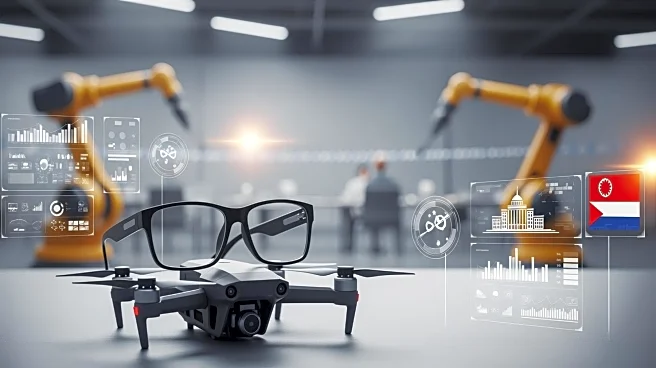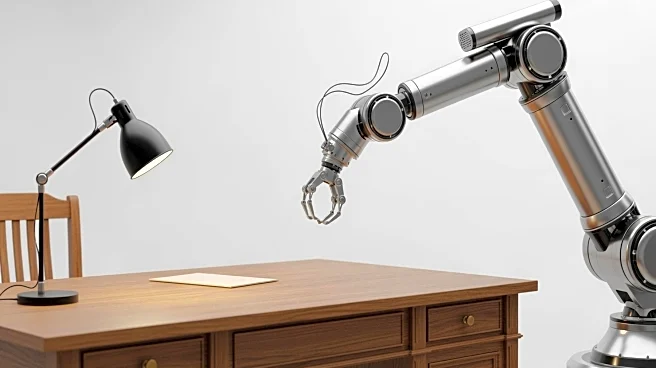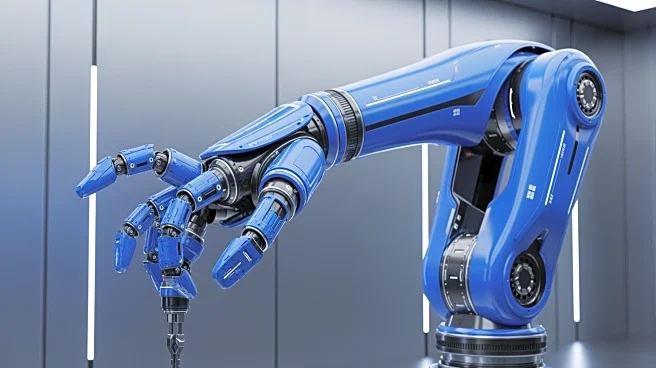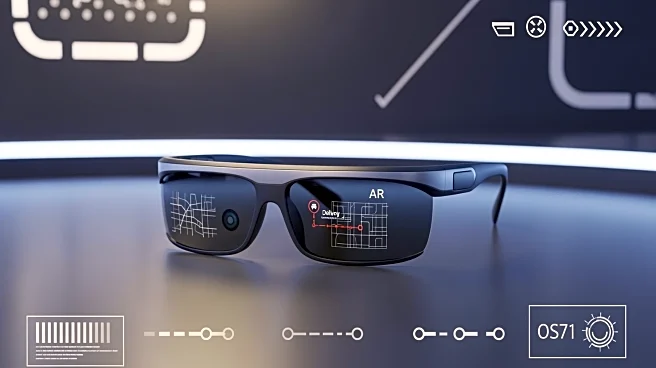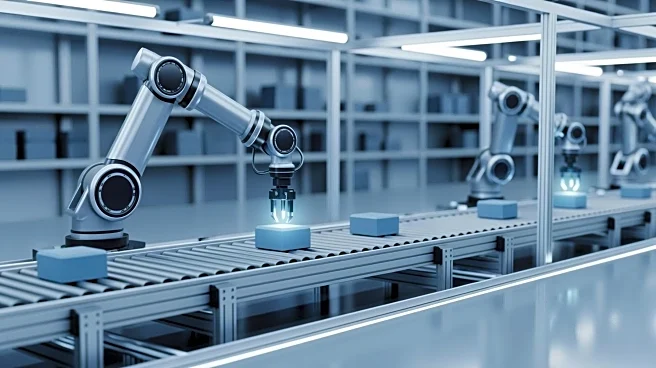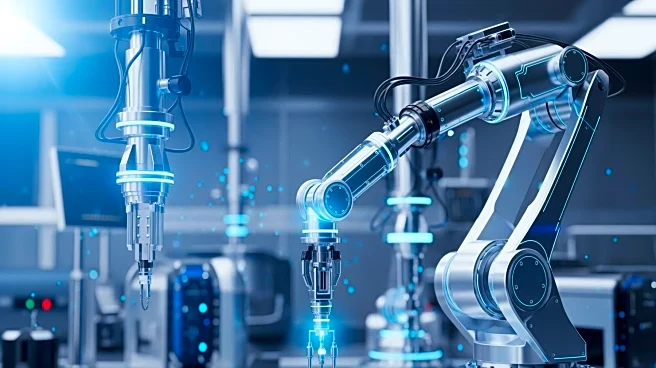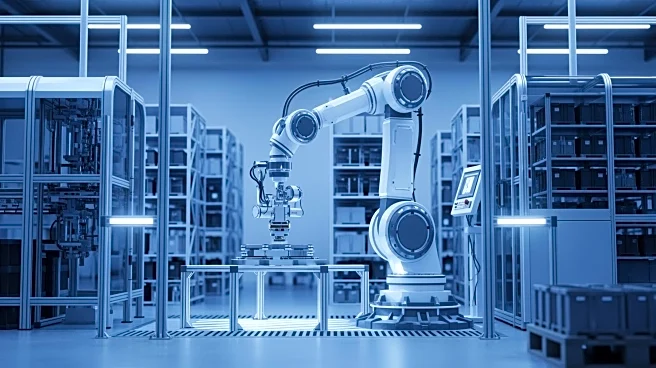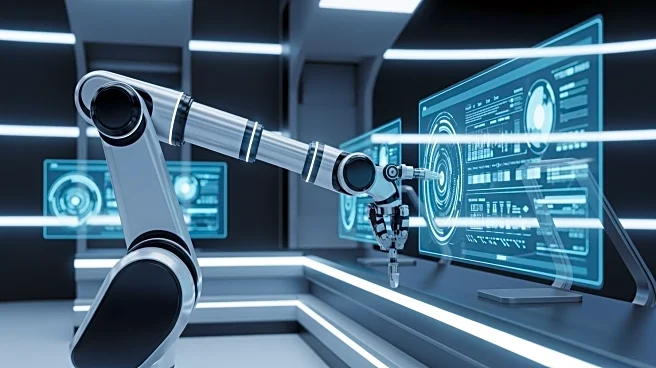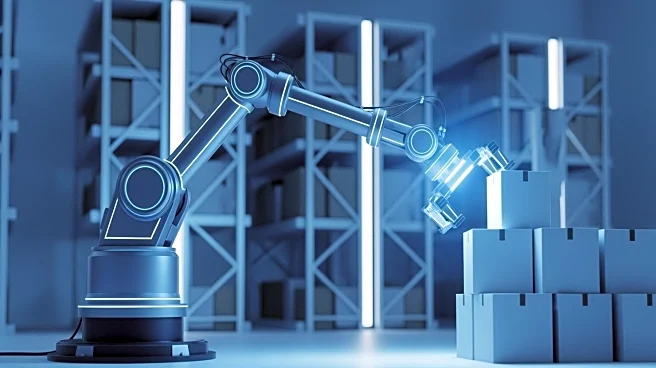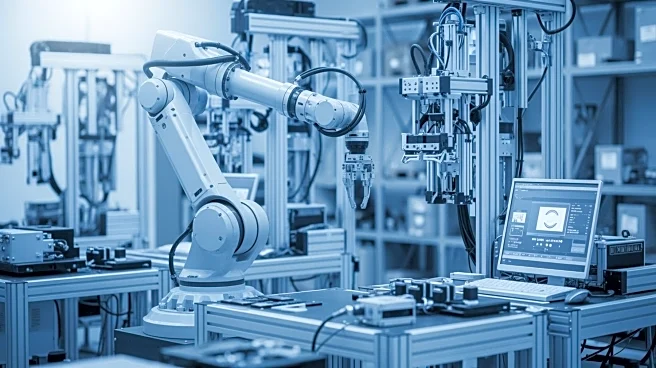What's Happening?
Amazon has unveiled new smart glasses designed to improve the efficiency of its delivery drivers. These glasses are equipped with features that allow drivers to scan packages and receive turn-by-turn directions, aiming to enhance productivity and safety
during deliveries. The development of these glasses involved input from hundreds of Delivery Associates (DAs) who work for Amazon's Delivery Service Partners. The glasses are part of Amazon's broader strategy to automate labor, with the company planning to replace over half a million jobs with robots by 2033. The smart glasses are seen as a transitional tool until deliveries can be fully automated through robotics.
Why It's Important?
The introduction of smart glasses for delivery drivers highlights Amazon's ongoing efforts to integrate technology into its workforce, potentially reshaping the delivery industry. This move could lead to increased efficiency and safety for drivers, but it also raises concerns about privacy and the future of human employment in logistics. As Amazon continues to invest in automation, the role of human workers may diminish, impacting job availability and altering the dynamics of the labor market. The use of smart glasses could also spark debates about surveillance and data privacy, given their ability to record surroundings.
What's Next?
Amazon's continued investment in automation suggests that the smart glasses are a temporary measure until robotic delivery systems are fully operational. The company is developing AI software to enable robots to perform delivery tasks, potentially eliminating the need for human drivers altogether. This shift could lead to significant changes in the logistics industry, with implications for employment and regulatory frameworks. Stakeholders, including labor unions and privacy advocates, may respond to these developments with calls for policy adjustments and ethical considerations.
Beyond the Headlines
The deployment of smart glasses in delivery operations could have broader implications for workplace surveillance and employee autonomy. As technology increasingly mediates work processes, questions about consent, data security, and the balance between efficiency and privacy become more pressing. The integration of wearable technology in the workforce may also influence cultural perceptions of labor and the role of human agency in automated environments.
